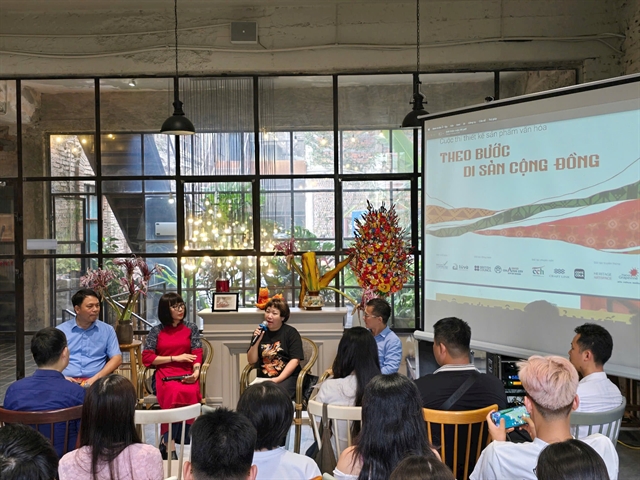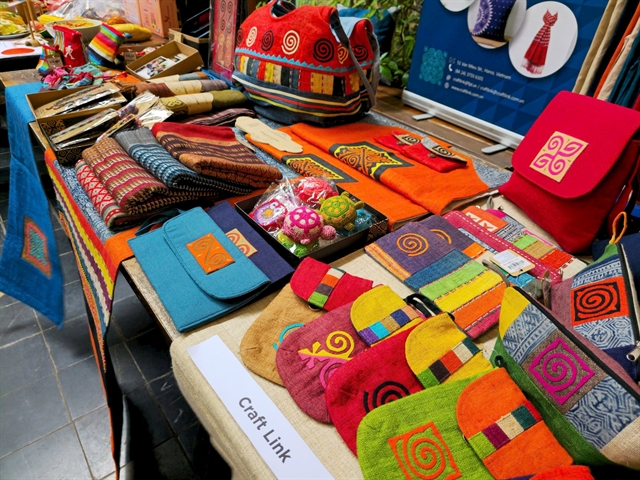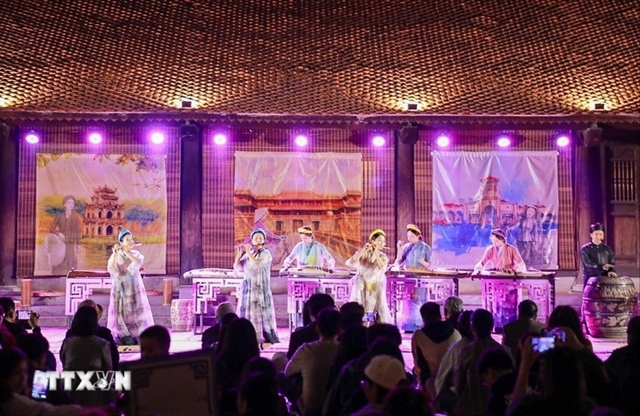 Life & Style
Life & Style


|
| Speakers at the seminar. Photos congluan.vn |
HÀ NỘI — The seminar 'Retelling the Past: From Heritage Materials to Cultural Products' took place yesterday in Hà Nội, bringing together cultural institutions, heritage communities, artists, designers and creative enterprises to explore a vital question of our time:
How can heritage not only be preserved, but also retold in the creative language of today?
The event was organised by the Centre for Cultural Heritage Research and Promotion (CCH), with support from the British Council in Việt Nam and in collaboration with Hanoi Grapevine, TUVA Communication and Complex01.
It aims to create a cross-disciplinary space for connection and dialogue, where people working in culture, arts, design, research, business and community development could gather and discuss how to transform heritage materials into creative designs and meaningful cultural products rooted in community identity.
Bùi Thị Hương Thủy, Deputy Head of the Heritage Management Division under the Hà Nội Department of Culture and Sports, said that the city and those working in heritage preservation share a common aspiration: to transform heritage into cultural products. The goal is to turn its intrinsic values into creative, consumer-oriented products that generate economic benefits while still affirming the cultural identity of Việt Nam.
The city has carried out a comprehensive inventory of both tangible and intangible heritage sites and built a detailed, well-organised database. This facilitates public access and encourages deeper engagement with heritage.
Heritage preservation, especially of nationally recognised sites, has been given priority in the city’s urban planning.
Hà Nội has also introduced policies to support artisans in traditional craft production.
From the perspective of creative enterprises, Trần Tuyết Lan, Director of Craft Link Social Enterprise, shared that since its founding, Craft Link has implemented numerous projects supporting ethnic minority groups, traditional craft communities and people with disabilities in preserving and promoting cultural identity.
In addition to providing training, the organisation also helps promote handmade products to both domestic and international markets, creating income opportunities for communities.
She also emphasised that integrating heritage into cultural and creative products still faces challenges.
“The first difficulty is the lack of connection between artisans, those who create handmade products, and designers, creative professionals, and businesses. This disconnect makes it difficult for handmade products to reach the market,” Lan said.
“Furthermore, most artisans in craft villages today are elderly. Meanwhile, younger generations are showing less interest in preserving and continuing traditional crafts.”
One major issue raised at the forum was intellectual property rights in the field of cultural and creative industries, particularly when a product embodies both traditional heritage and modern design contributions.
There have been numerous cases where, upon completion, the ownership of the final product was registered under the enterprise, rather than the artisan who created the original heritage element or the young designers who contributed the creative upgrades.
Representatives from several organisations noted that registering ownership rights for such 'hybrid' products often runs into legal and procedural difficulties, as they fall into a legal 'grey area' between intangible cultural heritage and modern intellectual property.

|
| The Creative Connection Zone attracted a large number of participants, featuring more than 13 outstanding craft organisations and brands. |
In addition to the main seminar, the Creative Connection Zone attracted a large number of participants, featuring more than 13 outstanding craft organisations and brands.
The event also introduced the design competition 'Following in the Footsteps of Community Heritage', targeting young creatives aged 18–30. The competition encourages participants to engage directly with heritage-holding communities, and from there, develop ideas for cultural and creative products in the spirit of “retelling old stories in new ways.”
The event also marked the official launch of disanketnoi.vn, an open digital platform developed by the organising team. The platform serves as a living library, a space to store, share, and expand the heritage data pool for the design and creative community. — VNS




